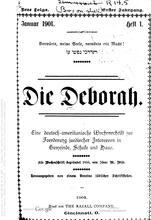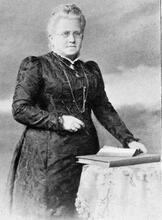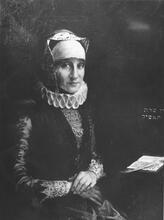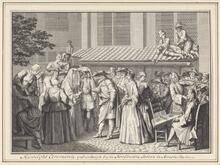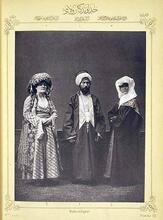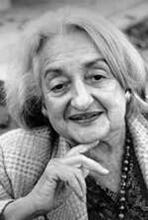Herodian Women
The Herodian dynasty produced a large number of seemingly impressive women, whose stories are recorded in Josephus’ writings. This article summarizes the lives of Herod’s mother, Cyprus; the wife of Herod’s youngest brother Pheroras; his wives Doris and Mariamme (II); Herod’s daughters-in-law Graphyra and Berenice (I); his granddaughters Herodias and Cyprus (II); and his great-granddaughters Salome (II) and Drusilla. Josephus’ source, Nicolaus of Damascus, was Herod’s court historian and assigned to women a diabolical role in the turn of events.
The Herodian dynasty produced a large number of seemingly impressive women. However, it is not always clear whether these women were really impressive or whether their literary portrayal made them so. We know that Nicolaus of Damascus, who was Herod’s court historian, was deeply interested in domestic affairs and assigned to women a diabolical role in the turn of events. Even after his writings ceased, other court historians adopted some of his rhetorical techniques. We today know almost everything about these women from Josephus, who used Nicolaus and other sources in his writings. Some of the more impressive Herodian women have a separate entry in the Encyclopedia linked here. The women marked in boldface will be discussed alphabetically below. The matriarch of the Herodian dynasty was Cyprus (I), Herod’s mother. She had one daughter—Salome (I)—and many daughters-in-law. The wife of Pheroras, her youngest son, was an impressive woman, who, alas, remains nameless. Herod was married ten times. We know the names of eight of his wives—1. Doris; 2. Mariamme (I) the Hasmonean; 3. Mariamme (II) daughter of Simon the High Priest; 4. Malthace—a Samaritan; 5. Cleopatra of Jerusalem; 6. Elpis; 7. Pallas; and 8. Phaidra. He had many sons and daughters and daughters-in-law. His son by Mariamme the Hasmonean—Alexander—married a foreign princess, Glaphyra, daughter of Archelaus, King of Capadocia. The other son—Aristobulus—married his cousin Berenice (I), daughter of Salome. The couple had three sons among them Agrippa I, who became king, and one daughter, Herodias. From her first marriage to her cousin Herod, son of King Herod and Mariamme (II) daughter of the high priest, Herodias bore Salome (II). Mariamme the Hasmonean also bore Herod a daughter—Shelamziyyon—who married her cousin Phasael (II) and gave birth to Cyprus (II), who then married Shelamziyyon’s cousin, King Agrippa I. They had a son—Agrippa II—and three daughters: Berenice (II), Drusilla and Mariamme.
Berenice (I)
Berenice (I) was the daughter of Salome (I) and her second husband, Costobarus. Sometime after 17 B.C.E. she married Aristobulus I, Herod’s second son by Mariamme the Hasmonean. According to Josephus, this was not a happy marriage, since Berenice assisted her mother in spying on her husband. By inference we may learn that after the execution of her husband in 7 B.C.E. she moved with her family to Rome, where she found a congenial atmosphere for her children’s upbringing within the imperial court. Her special friend was Antonia, Mark Anthony’s daughter and the future Emperor Claudius’ mother (Ant. 18:164). This is perhaps the reason why Strabo, the geographer and historian, found it necessary to mention her in passing (Geographic 16:46).
Cyprus (I)
Herod’s father, Antipater the Idumean, was the son of forced converts who became Jews during the reign of John Hyrcanus (135–104 C.E.). His acceptance of Judaism seemed to have been syncretistic and cosmopolitan. His marriage to Cyprus, the daughter of a Nabatean aristocrat, is proof of this. The issue that interests scholars most about Cyprus is the extent to which her foreign extraction influenced Herod’s Jewish or non-Jewish identity. This question is motivated by the matrilineal principle that governs Jewish identity today. The issue was of no interest to Josephus. His only comments about her, aside from genealogical references, depict her as an active ally of her daughter Salome in their pursuit to the death of Herod’s wife, Mariamme the Hasmonean (e.g. Ant. 15:80; 184–185).
Cyprus (II)
Like her husband King Agrippa I, Cyprus too was King Herod’s grandchild. Yet all the details we know about this woman’s life are connected with her marriage to Agrippa and the assistance she rendered him when he was young and poor. Thus we hear that she managed to avert her husband’s desperate, suicidal mood by writing to his sister Herodias, who was the wife of Herod Antipas, tetrarch of Galilee at the time, and thus securing employment for him (Ant. 18:148). This shows that Josephus imagined a network of connections between women (and cousins) who could maneuver their men-folk and influence the political scene. Finally, when her husband was short of money and had to escape his debtors under cover, Cyprus used her charms to secure a loan for him from Alexander, the alabarch (chief magistrate) of the Jewish community in Alexandria (Ant. 18:160). This is the last we hear of her. Since this story contradicts another one, where it seems that the loan was granted to Agrippa by Antonia, the Emperor Claudius’ mother (Ant. 18:164), one scholar suggested that it is not historical, and that Josephus used Cyprus to create a dichotomy between a good wife—Cyprus—and a bad one—Herodias.
Doris
Doris was King Herod’s first wife, whom he married before he aspired to the throne and married a Hasmonean princess. She bore him one son—his firstborn, Antipater (Ant. 14:300). When Herod married the Hasmonean he divorced Doris and sent her away (Josephus, BJ 1:432). After Mariamme’s execution, and Antipater’s renewed favor with his father, Doris was recalled to court (BJ 1:451). However, with the intrigues and plots that plagued Herod’s court toward his death in 4 B.C.E., Doris together with her son was implicated, and while Antipater was executed, Doris was once against banished from court (Ant. 17:68).
Drusilla
Drusilla (38–79 C.E.) was the youngest daughter of King Agrippa I. Her first betrothal, arranged by her father, to Epiphanes, prince of Commagene fell through in 44 C.E., with her father’s death, when she was only six years old (Ant. 18:355). Josephus further relates that she was later married to another foreign royalty, Aziz, king of Emesa , only to divorce him when courted by the Roman governor of Judaea, Felix, the Emperor Claudius’ freedman (Ant. 20:139, 141). She is usually mentioned in the literature in order to draw attention to the fact that all of Agrippa’s daughters initiated their own divorce. One interesting detail which Josephus adds is that she and her son Felix both died at Pompeii, in the eruption of Mount Vesuvius in 79 C.E. (Ant. 20:144).
Glaphyra
This Capadocian princess was related to the Herodians only by marriage. The wife of Alexander, Herod’s first son by Mariamme the Hasmonean, she bore him two sons. Josephus uses her presence in the Herodian court in order to describe how her obvious royal lineage caused jealousy among the lesser-born Herodian princesses (Ant. 16:193). With her husband’s execution in 7 B.C.E., she returned to her father’s court and married King Juba of Mauritania in north Africa. However, after his death she returned to the Herodian court when Archelaus, Herod’s son by Malthace the Samaritan, proposed to her (Ant. 17:349–351). Josephus finds it necessary to condemn this match, since Glaphyra had had children by Alexander and was thus, according to Jewish law, forbidden to his brothers. Whether Glaphyra ever bothered to endorse any aspect of Judaism is never stated. Her offspring by Alexander, however, while they served as kings of Armenia, relinquished any Jewish connection (Ant. 18:140).
Herodias
Herodias, King Agrippa’s sister is immortalized in the New Testament as the femme fatale who instigated the execution of John the Baptist. According to Josephus, she was first married to her uncle Herod, son of King Herod and Mariamme (II) daughter of the high priest. They apparently had one daughter Salome (II). Later, however, according to Josephus, a visit to her house by another uncle—Herod Antipas, son of Cleopatra of Jerusalem—made her abandon her husband in order to marry his brother (Ant. 18:110). This, according to the New Testament, was the reason for John the Baptist’s condemnation of Antipas’s rule (Mark 6:17–18; Matthew 14:3–4). Jewish law saw such a marriage as incest. Antipas had previously been married to a Nabatean princess, daughter of the Nabatean king Aretas. Their divorce led to war with the Nabateans. This war, according to Josephus, was perceived by the people as a punishment for the execution of John the Baptist (Ant. 18:116). The New Testament, however, sees John the Baptist’s death as much more directly connected to this woman: Herodias wanted this holy preacher dead and when her daughter won the favors of Antipas, who promised to grant her every wish, her mother persuaded her to ask for the Baptist’s head (Mark 6:21–28; Matthew 14:6–11). Although Josephus does not tell this story, he too seems to have known of Herodias’s evil reputation. He relates that she was jealous when her brother Agrippa became king, and persuaded her husband to go to Rome and demand a similar honor from the emperor, Caligula (Ant. 18:240–244). Instead, Antipas was exiled to Lyons in Gaul, where he eventually died. Herodias was thus directly responsible for her husband’s downfall. As a final act of contrition, Herodias is described as choosing to accompany her husband into exile (Ant. 18:254–255).
Mariamme (II)
Mariamme (II) was the daughter of Simon son of Boethus, the High Priest. After the execution of Mariamme (I) the Hasmonean, Herod met Mariamme II and fell in love with her because of her beauty. In order that their social status match, he appointed her father—a certain nobleman of Alexandria, of priestly descent—to the high priesthood (Ant. 15:319–322). Mariamme bore Herod one son (his fourth), also designated Herod, who later married his niece Herodias. The tower built in Jerusalem, designated Mariamme, was probably thus named in her honor (BJ 5:170). However, Mariamme too fell out of favor toward the end of Herod’s reign. She was implicated in the plots surrounding his death and banished from court. Her son was passed over in the succession process (BJ 1:599).
Salome (II)
Salome (II) was the daughter of Herodias and her first husband, Herod. It is thus surmised that she must be the young maiden who, according to the New Testament, danced before Herod Antipas on his birthday and won his favor, securing the execution of John the Baptist (Mark 6:21–28; Matthew 14:6–11). In the New Testament, however, she is never named, and some scholarship alerts us to the chronological difficulties inherent in this identification. About Salome, Josephus reports differently. He first relates her marriage to her old great-uncle Philip, and then, after his death, her second marriage to her younger cousin, Aristobulus (Ant. 18:136). This Aristobulus was the son of Herod of Chalcis, Berenice (II)’s second husband, by his first wife. Since this Aristobulus eventually became king of Lesser Armenia (Ant. 20:158), Salome became queen. Her portrait was imprinted on coins minted in her kingdom, and she is thus the only Herodian woman whose image has survived from antiquity.
Pheroras’s Wife
This woman, who is one of the few Herodian women who remain nameless, was apparently an important character in Herod’s court, and was made of a different cloth altogether from other Herodian characters. Where Pheroras met her and who her forefathers were is obscure, although Josephus states that she was initially a slave. This, however, may be no more than an attempt to denigrate the woman in terms understood at the time as demeaning. That her lineage was improper emerges from the fact that Herod tried several times to sever his brother’s relations with her by offering him more suitable matches, including his own daughter. Pheroras declined, but when pressed he divorced his wife but brought her back (BJ 16:194–199). Her unique interests emerge from an episode in which she aided the Pharisees by paying a fine imposed on them, when they refused to take an oath of allegiance to King Herod (Ant. 17:42–43). This suggests that, unlike all other Herodian women (but like some Hasmonean ones), Pheroras’s wife had leanings toward the Pharisees. Despite Pheroras’s devotion to her, Josephus’s writings abound with innuendoes about her sexual promiscuity (e.g. Ant. 17:51). When Pheroras eventually died in mysterious circumstances, his wife was implicated in a poisoning plot. She then tried to commit suicide, but failed. Subsequently a discovery of the real culprits cleared the woman’s name (Ant. 17:62–63; 68–76). We hear nothing more of her.
Bar Kochva, Bezalel. “Doris, Herod’s First Wife.” Cathedra 110 (2003): 5–18 (Hebrew).
Cohen, Shaye J. D. The
Beginnings of Jewishness, 13–24. Berkeley: 1999. Was Herod Jewish?
In this chapter Cohen discusses the extent to which the matrilineal principle
applied in determining Herod’s Jewish identity—did his mother’s Nabatean nationality
play a role in it?
Ilan, Tal. Integrating
Jewish Women into Second Temple History. Tübingen: 1999. pp. 15–17;
23–25: “Fear Not the Pharisees” (BT Sotah
22b): The Attraction of Aristocratic Women to Pharisaism; pp. 85–125:
“Things Unbecoming a Woman” (Ant.
13:431) Josephus and Nicolaus on Women; pp. 217–233: Julia Crispina, A Herodian
Princess in the Babatha Archive.
In three chapters in this book Herodian women are discussed. In a chapter
on women’s attraction to the Pharisee movement, Ilan discusses Pheroras’ wife’s
assistance to those people and its implications. In a chapter on Josephus
on women Ilan discusses many of the Herodian women mentioned here, as they
are portrayed by Herod’s court historian, Nicolaus. In a chapter on a woman
by the name of Julia Crispina mentioned in the Judaean Desert papyri, Ilan
suggests that she was BERENICE (II)’s granddaughter, and thus a Herodian princess.
Ilan, Tal. “King David, King Herod and Nicolaus of Damascus.” Jewish
Studies Quarterly 5 (1998): 195–240.
Ilan suggests that Nicolaus of Damascus wanted to portray Herod as a second
David. In this paper she discusses some Herodian women, particularly MARIAMME
(I) but also Mariamme II and Herod’s other wives.
Kokkinos, Nikos. “Which Salome did Aristobulus Marry?” Palestine
Exploration Quarterly 118 (1986): 33–50.
Kokkinos suggests that there are great chronological difficulties associated
with Salome II and claims that Salome who married Philip, and was the daughter
of Herodias, cannot be identical with Salome who married Aristobulus, who
was Herod Antipas’ daughter from his Nabatean wife.
Kokkinos, Nikos. The
Herodian Dynasty, Origins, Role in Society and Eclipse. Sheffield:
1998. pp. 206–245: The Wives of Herod and their Offspring; pp. 264–271: Herodias
(I) and Mariamme (IV).
The first chapter is a full discussion and description of all of Herod’s wives
and their genealogical connections. The second one is a sound discussion of
Herodias and her connections.
Lilie, W. “Salome or Herodias.” Expository
Times 65 (1953–1954): 251.
Lilie claims that the woman who danced before Antipas and had John the Baptist
executed was not Salome but a certain Herodias, the daughter of Antipas. He
bases this claim on an apocryphal Christian composition—a letter by Herod
Antipas to Pontius Pilate mentioning his daughter Herodias.
Macurdy, Grace. Vassal-Queens
and Other Contemporary Women in the Roman Empire, 63–93. Baltimore:
1937.
Macurdy describes in her own words the portrayal of Herodian women as they
appear on the pages of Josephus. The difference between Josephus work and
her analysis is not great.
Reinach. Theodor, “Le mari de Salomé et les monnaises de Nicopolis d’Arménie,”
Revue
Êtudes Ancien 16 (1914): 133–157.
This is the publication portraying Salome (II) on the coins of Lesser Armenia.
Schalit, Abraham König
Herodes: Der Mann und sein Werk, 563–644. Berlin: 1969.
In this chapter Schalit outlines his understanding of the influence of Herod’s
court and family on his politics and actions. In most aspects he follows Josephus’
(or rather Nicolaus’) rhetoric, although in some cases he identifies its bent
and criticizes it.
Schwartz, Daniel R. Agrippa
I: The Last King of Judaea, 48–51. Tübingen: 1990.
In this short discussion Schwartz suggests a literary antithesis between Cyprus—the
good wife—and Herodias—the bad one.



